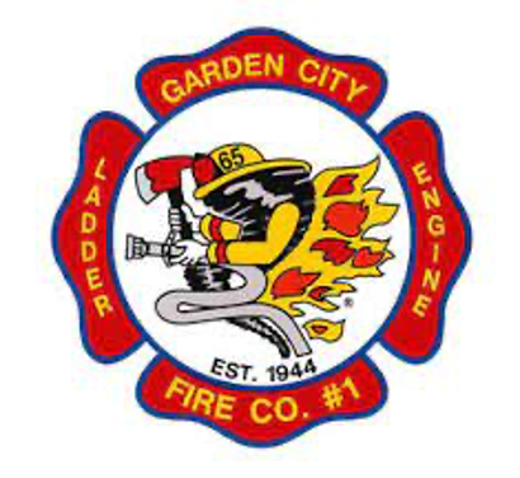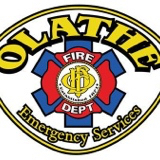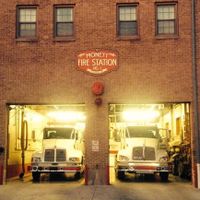Information
-
Document No.
-
Conducted on:
-
Location :
- Station 65
-
Apparatus:
-
Inspector
-
(√) Okay. (O) Deficiency Found. (X) Deficiency Rectified. (NA) Not Applicable
Exterior Walk-Around
-
Look under vehicle; Check for fresh oil, grease, water, or fuel leaks.
-
Visual tire inspection; Check for gouges, cuts, tread wear, rim damage and lug nuts in place.
-
Lights; Check headlights, turn signals, brake, and emergency lights.
-
Cleanliness; check for dirt and debris.
Engine Operations
-
Seats and seatbelts; Check adjustment mechanisms, SCBA brackets, seatbelt clips, frayed belts.
-
Engine started without problems or noises?
-
Dash instruments; Check that all gauges are operational.
-
Vehicle fuel; Maintain fuel level at or above 3\4.
-
Check levels of: engine oil, transmission fluid, windshield washer fluid
-
Mirrors/radios/sirens/horns/backup alarms; Check mirrors for cracks, brackets, adjust as needed. Check radios, sirens, horns (electric and/or air), and back up alarms for proper operation.
-
Steering; Check for freeness of turning, and steering wheel adjustments.
-
Brakes (stopping and parking); Check for freeness, holding ability, dragging, unusual odors, and sounds. Check for air and/or fluids leaks.
-
Windshield wipers/washers; Check wipers and washers for correct operation. Check windshield for chips or cracks.
-
Heater/Defroster/Air conditioner; Check that all controls are operational.
Pump Operations
-
Pump engagement; Check that the pump engages/ and disengages when shifted into and out of operation. Check that all valves and controls work freely and are placed in the correct position. Check that all caps, adapters, and fittings are in place.
-
Pump panel; Check that all panel light are operational, check for loose, broken, or missing knobs and switches.
-
Water levels; Visually check water levels. Ensure the gauges on the pump panel coincide with visual check. Maintain at full.
Equipment Checks
-
SCBA; Check SCBA for functional operation. Check all brackets, clips, and straps to ensure they are operational and free of tears, frayes, or crackes. Check all hose lines for nicks or damage. Check PASS Alarm. Check lights. Check mask. Maintain air cylinders at full.
-
Tablet CAD system and Active System; Check to ensure tablet is online and functioning.
-
Map book, pre-plans,ERG,keys; Check that these items are available for use.
-
Gas monitor; Check for functional operation and last bump test date.
-
Portable Radios; Check inventory for number of radios. Check that they are operational and on channel 3.
-
Thermal imaging camera; Check that the unit is maintained and operational. Change and charge batteries as needed.
-
Medical bag; Check inventory of medical bags, ensure pulse oximeter is accounted for. Ensure Oxygen is maintained at a minimum of 1500 psi.
-
Ropes/rescue/forcible entry tools/axes/pike poles; Check to ensure that all equipment is in place and ready for use.
-
Hose loads/fittings/appliances; Check that all equipment is in place and available for use.
-
Hose/tools/appliances/nozzles/foam equipment; Check to ensure all equipment is in place and ready for use.
-
Electric cords/pigtails/portable lighting; Check that equipment is in place and available for use.
-
Salvage and overhaul equipment; Check that all equipment (covers/shovels/broom/etc.) are in place and available for use.
-
Tool box(s); Check that toolboxes are sufficiently supplied with necessary tools for use.
-
Portable extinguishers; Check charge levels, safety pins, and service tags.
-
Ladders; Check that all ladders are in place and available for use.
-
Power saws/rescue tools/ PPV fans; Check fuel, oil, and operation of the units. Check for leaks or damage. Start and run equipment. Maintain units and spare fuel cans at near full levels. Keep units clean.
-
Generators; Check fuel, oil, and operation of units.
-
Extrication equipment; Check fuel, oil, and operations of units. Check all hoses, connections, and tools for serviceability.
Aerial Ladder Operations
-
Aerial outriggers; Engage PTO and check aerial outrigger operation.<br>
-
Aerial ladder; Check aerial operations. Visually inspect aerial structure. Check lighting, controls, and nozzle. Ensure drain valve is open.
-
Additional comments:
-
Tap to enter information
















